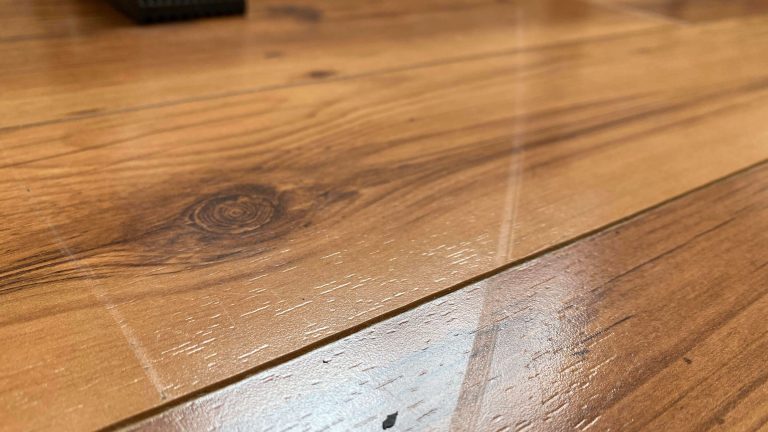Refinishing Engineered Wood Floors to Their Former Glory
Are your engineered wood floors showing signs of wear and tear, losing their luster and charm? It’s time to unlock the secrets of renewing, refreshing, and refinishing them to restore their former glory. Whether it’s addressing scratches, dents, or simply reviving the natural beauty of the wood, this comprehensive guide has got you covered.
Using industry-leading techniques and expert insights, we’ll delve into the rejuvenation journey, ensuring that your floors regain their pristine appeal. From choosing the right process to understanding the refinishing methodology and best maintenance practices, this article is your ultimate companion in transforming lackluster floors into a stunning focal point of your space. Get ready to witness the transformative magic as we unlock the potential of your engineered wood floors, elevating them to their former grandeur.
Understanding Engineered Wood Floors
Engineered wood floors consist of multiple layers of wood veneer, bonded together to form a durable and versatile flooring option. Unlike solid hardwood, engineered wood is less susceptible to expansion and contraction due to changes in humidity and temperature. This makes it an ideal choice for areas with fluctuating environmental conditions, such as basements and kitchens.
The top layer of engineered wood is crafted from high-quality wood species, providing the authentic appearance of traditional hardwood flooring. Beneath the veneer, multiple layers of plywood or high-density fiberboard enhance the structural stability of the flooring. This construction not only offers enhanced durability but also makes engineered wood floors compatible with a variety of installation methods, including glue-down, floating, and nail-down.
Understanding the composition and characteristics of engineered wood floors forms the foundation for successful refinishing. By recognizing the unique properties of this flooring type, you can tailor your refinishing approach to ensure optimal results that bring out the natural beauty of the wood.
Advantages of Refinishing Engineered Wood Floors
Refinishing engineered wood floors presents a multitude of benefits that go beyond mere aesthetics. By revitalizing the surface of your floors, you can effectively extend their lifespan, saving both time and money in the long run. Refinishing is a proactive measure that prevents minor imperfections from evolving into major issues, ultimately preserving the integrity of your flooring investment.
Furthermore, the process of refinishing allows you to enhance appearance of your floors, giving you the freedom to experiment with different sheens of finishes. Whether you prefer a glossy sheen, a matte finish, or a natural oil-based look, refinishing empowers you to align your flooring with your evolving interior design preferences.
In addition to enhancing the visual appeal, refinishing engineered wood floors can also contribute to a healthier indoor environment. By sealing the surface and filling in gaps and crevices, refinishing reduces the accumulation of dust, allergens, and other pollutants, promoting cleaner air quality within your home.
Signs That Your Engineered Wood Floors Need Refinishing
Over time, the wear and tear on engineered wood floors become evident through various signs that indicate the need for refinishing. Scratches, dents, and discoloration are common indicators that the protective finish of your floors has deteriorated, leaving the underlying wood vulnerable to damage. If you notice that spills are no longer beading on the surface or that the texture of the flooring feels rough and uneven, it may be time to consider refinishing.
Another telltale sign that your engineered wood floors require refinishing is the presence of noticeable gaps or separations between the planks. These gaps not only detract from the visual appeal of the floors but also compromise their structural integrity. Refinishing can address these issues by filling in gaps and ensuring a seamless, uniform surface that exudes timeless elegance.
In some cases, the natural luster of engineered wood floors may diminish over time, resulting in a lackluster appearance that dulls the overall ambiance of your space. Refinishing offers the opportunity to restore the radiance of your floors, rejuvenating the entire room and infusing it with renewed vibrancy.
Special Considerations When Refinishing Engineered Wood Floors
Due to the special composition of engineered wood floors, the traditional method of refinishing using sandpaper is not possible. The veneer layer of wood on the top of the wood floor is often too thin and sanding it may damage the integrity of the floor itself causing fracturing and splintering of the individual planks. Because of this, the Clean ReCoat Process is the only viable option when refinishing engineered wood floors. The Clean ReCoat Process eliminates this risk by refinishing the surface of the protective layer or finish on top of the floor and not removing any of the wood veneer. This process both protects and preserves the beauty of the engineered wood floor for years to come.
Tips for Maintaining Refinished Engineered Wood Floors
After investing time and effort in refinishing your engineered wood floors, it’s essential to implement proactive maintenance practices that preserve the beauty and durability of the newly refinished surface. Consider the following tips to prolong the longevity of your floors and maintain their impeccable appearance.
1. Regular Cleaning: Establish a consistent cleaning routine using a gentle wood floor cleaner and a microfiber mop to remove dust, dirt, and spills. Avoid using harsh cleaning agents or excessive water, as these can compromise the finish and the integrity of the wood.
2. Protective Measures: Place protective pads under furniture legs to prevent scratches and dents caused by movement. Additionally, consider using area rugs in high-traffic areas to minimize wear and tear on the refinished surface.
3. Prompt Spill Cleanup: Address spills and moisture promptly to prevent them from seeping into the wood and causing damage. Use a clean, dry cloth to absorb the spill and ensure that the affected area is completely dry.
4. Avoid High Heels and Sharp Objects: Encourage a shoe-free policy or provide designated footwear for indoor use to minimize the risk of scratches and indentations caused by high heels and sharp objects. Place mats at entryways to capture dirt and debris from shoes.
By integrating these maintenance practices into your daily routine, you can safeguard the investment of refinishing your engineered wood floors and enjoy a lasting showcase of elegance and resilience within your home.
By understanding the nuances of engineered wood floors, recognizing the signs that signal the need for refinishing, and preparing meticulously for the refinishing process, you can unlock the full potential of your floors and infuse your space with renewed splendor.
Refinishing engineered wood floors transcends mere maintenance; it embodies an artful revival of elegance and endurance, breathing new life into your home environment. Whether you choose to enlist professional services or embark on a DIY refinishing endeavor, the rewards of a beautifully refinished surface resonate beyond the visual allure, elevating your space with timeless sophistication and resilience.
We trust that this guide has equipped you with the insights and practical guidance needed to navigate the refinishing process with confidence and finesse. Embrace the art of refinishing engineered wood floors












